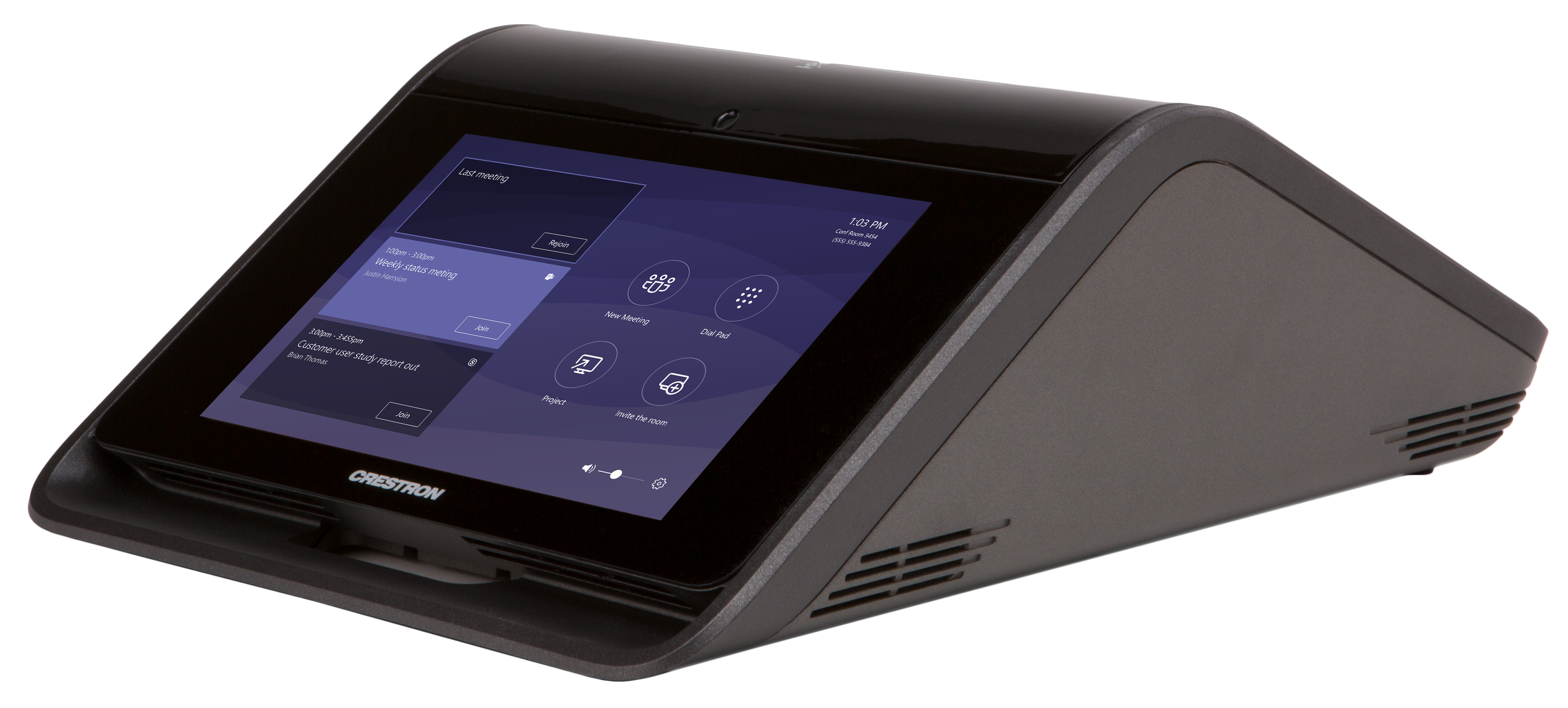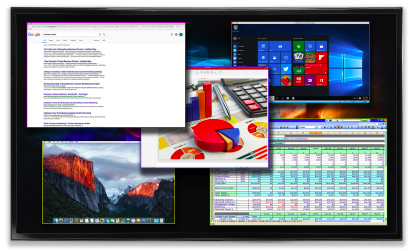In 2018, the unified communications (UC) market saw rapid innovation, industry consolidation, and a shift toward team and workflow collaboration. In early 2019, Nemertes Research identified trends to watch in the UC market in the coming year. At midyear, it’s a good time to take a look at some of the most interesting developments to determine how the UC space is evolving.
Unified Communications Becomes Cloud-First
Last year marked an inflection point for UC in the cloud. According to Nemertes’ Unified Communications and Collaboration: 2019 Research Study, 67 percent of organizations now run at least part of their UCC (unified communications and collaboration) applications in the cloud, with nearly one-third being all cloud.
The approach to cloud services varies by the size of the organization. Larger companies are leaning on hosted, custom-built services, while smaller organizations prefer the flexibility and lower cost of UCaaS. The AV industry has responded by making shifts—some subtle and some wholesale changes in their platforms.
Scroll Through the Gallery Below to See the Latest UC Products
Bobby Beckmann, chief technology officer at Lifesize, explained the magnitude of the shift within his organization. “At Lifesize, we completely changed our product architecture and re-engineered our code base from the ground up to make our videoconferencing service and customer implementations ready for the cloud. Most UC service providers without a cloud offering are all but dead in the water at this point.”
Crestron was an early adopter of UC’s move toward a cloud-first approach. “During the time when taking a cloud-first approach was controversial, Crestron knew that it was only a matter of time until it became the new standard,” said Joseph Sarrasin, program manager, enterprise solutions, Crestron. “This led us to introduce Crestron XiO Cloud, the revolutionary Azure IoT-based deployment and management platform for the modern, intelligent workplace.”
Critical Factors for Cloud Migration
Ingram Micro’s Stephen Yochum, director and general manager, unified communications, advises clients to carefully evaluate two critical factors when considering migrating to cloud solution: security and infrastructure. As the service provider, Ingram must ensure the customer’s network is secure and scalable. Proprietary data should be well protected today; in the future, Yochum sees data encryption as UC’s answer to security, another trend identified in the Nemertes study.
The second consideration is the existing infrastructure. “Before migrating, assess the current network bandwidth, traffic, and security to determine what additional measures may be needed to move to the cloud,” Yochum advised. “In some cases, you may be moving facilities. If that’s the case, you must assess security needs, and then design and deploy a secure network that can scale to accommodate emerging communications and collaboration tools and solutions.”
Lifesize’s Beckmann points out that for their service and any other in the UCaaS, VCaaS, or collaboration segments, key considerations for cloud migration should include global scalability, performance, and reliability, achieved by maintaining a worldwide network of data centers. Beckmann noted a shift toward recognizable cloud providers like Amazon Web Services, Google Cloud Platform, and Microsoft Azure. Enterprise and SMB buyers alike should be actively asking questions of their vendors to ensure their expectations for a mature service will be met and consistently guaranteed when shifting to cloud services.
The Cloud from a Management Perspective
A big consideration when migrating communications and collaboration tools to the cloud is eliminating the learning curve for users. Managers have to keep in mind who is ultimately interacting with these solutions and the impact it will have on their ability to do their job.
Another consideration is simplifying the management and monitoring of devices. Taking a cloud-first approach with UC solutions not only enables system managers to dial up and down infrastructure on demand, but it allows them to eliminate the complexity of on-premise deployment. One huge benefit of simplified management is being able to efficiently manage devices remotely from one centralized location, making it easier to update firmware, deploy new software, gather data, and configure thousands of devices in the same time it takes to configure one.
UCaaS Offerings Are Ready to Go Global
Crestron believes that UCaaS is mature enough to support larger, global organizations. Both industry-wide and at Crestron, many of these platforms are exactly where they need to be in terms of functionality and scalability.
“Crestron’s UC partners, Microsoft Teams and Zoom, can efficiently support the demands of both small and large organizations well beyond what the industry has been able to see for other on-premise solutions,” Sarrasin said. “Using either Microsoft Teams or Zoom, users can easily dial up an organization of five people or 50,000 people simply by subscribing. When you interoperate all of the organization’s other tools like Microsoft Word or Excel, you have an ideal overall coworking experience while providing a massive improvement in productivity across the enterprise.”
[Transforming Meetings With Smarter UC Solutions]
When Ingram considers global adoption, they point out that analytics, automation, and AI are key differentiators from on-premise solutions. Robust analytics are helping spur adoption in the enterprise. Many UCaaS solutions started in the home, moved to SMB and are now mid-market. The scope of what these tools can offer is a game-changer for big business.
“Some of these analytics, automation, and AI tools coming into the UCaaS marketplace are grabbing the interest of the enterprise,” said Yochum. “For example, UCaaS technology is capable of detecting an angry customer and bringing a manager on the line immediately. This is happening in the call centers as well to improve delivery of a positive end customer experience.”
Team Collaboration as the Hub of Work
The Nemertes study reported that although nearly half of all companies use collaboration applications, most workers still view these as instant messaging tools. Expect a greater focus on team collaboration, as manufacturers make team collaboration the centerpiece of their UCC user experience. Vendors will move beyond simple technology adoption to more integrated workflows and expanded feature sets so they become a true hub for internal and external collaboration.
[Tips to Ensure Your Collaboration Tech Actually Gets Used]
In the near-term future of team collaboration, Lifesize believes that informal chat will continue to play an important role, with escalation to both formal and impromptu video meetings and content or screen sharing when needed. Lifesize is prepared; its technologies integrate seamlessly with enterprise collaboration platforms like Slack and Microsoft Teams, calendaring from Outlook and G Suite, and content sharing via Lifesize Share for meeting rooms and the brand new Lifesize Go browser-based service for mobile access.
Tools to Create a True Collaboration Hub
Microsoft Teams and Zoom have shifted the way people work within a coworking business model. By introducing these platforms and hosting them in the cloud, employees have expanded access to their projects, making it easier to work anywhere.
Many users are already familiar with Google Suite tools, having used Google Docs and Google Sheets to co-edit documents in real time. Having platforms that can leverage existing tools like this decreases the learning curve and makes it even easier to introduce and encourage team collaboration. Mobile apps should deliver a seamless, standardized experience.
“The leaders in this space are working to create an anytime, one-touch, secure, and collaborative environment,” said Ingram’s Yochum. “Collaboration is more than just voice and video nowadays. Collaboration is voice, video, presence, file sharing—all in real time from the device of your choice.”
Yochum goes on to point out that, in his opinion, simplicity and security are the two primary drivers in creating successful collaboration environments. The technology you choose should be able to talk to your other systems (like CRM) with seamless integration. Otherwise, enterprise-wide adoption will slow significantly. He cautions companies not to be lured by the bells and whistles that, in the end, may not integrate well with legacy systems.
The Cutting Edge of Collaboration
Enhanced feature sets are pushing into new territory, and will continue to do so. For example, the latest addition to Bosch’s Dicentis Conference Family is the Dicentis Interpreter Desk, whose design is optimized for the real-life needs of interpreters based on observations of and interviews with expert interpreters and technicians worldwide. The result is a product that complies with the latest market requirements, addresses potential future requirements, and gives the interpreter greater freedom to focus on the job by offering intuitive operation. The system’s installation and configuration is quick and easy. The state-of-the-art IP technology provides flexibility in a future-proof solution.
From DVDO, TILE unleashes universal casting that enables multiple users to simultaneously stream any content from almost any wireless device to one or two displays. TILE will cast five on-screen tiles from multiple users, or up to four 1080p video feeds simultaneously. The free companion app makes it easy for collaborators to simply download the app and start streaming.
DVDO CEO Doug Fealtman said, “DVDO’s TILE is today’s digital canvas product that the meeting room and classroom of the future needs. We’ve added the top features our clients have been asking for—rock solid video, display flexibility, and additional management for today’s educators and communications pros.”
In the UCC space, it’s shaping up to be an exciting year. The aaS business models continue to push organizations toward developing customized collaboration experiences, tie them into workflows, and develop new and exciting capabilities, like multi-streamed video. Expect citizen developers to be more active in creating business applications using environments sanctioned by corporate IT, and with drag-and-drop functionality. Those who get ahead of these collaboration trends by proactively planning for change now are in the very best position to succeed.




